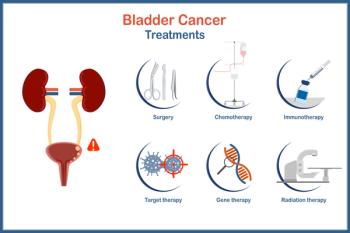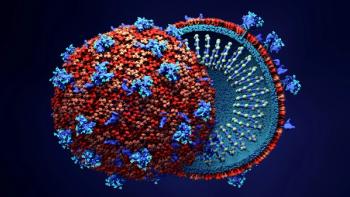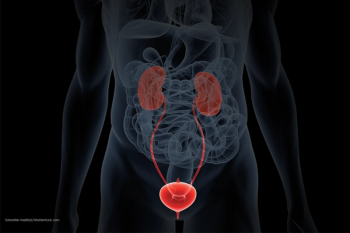
Integrin beta-6 emerges as a novel biomarker for NSCLC
Key Takeaways
- High IB6 expression is prevalent in nonsquamous NSCLC, indicating its potential as a therapeutic target.
- The BEACON study used de-identified data from the Tempus Database, assessing IB6 expression via immunohistochemistry.
High levels of integrin beta-6 (IB6) in metastatic non-small cell lung cancer suggest that it could be a target for treatment.
At the European Society of Medical Oncology Congress in October 2025 in Berlin, Germany, researchers shared results from the BEACON study, which is the first real-world look at how integrin beta-6 (IB6) is expressed in metastatic non-small cell lung cancer. The results showed that high levels of IB6 are often found in NSCLC, especially in nonsquamous types. Those levels suggest that IB6 could be a good target for treatment.
IB6 is a transmembrane adhesion protein implicated in tumor progression and invasion. Overexpression has been documented across multiple solid tumors, including NSCLC. Understanding IB6 prevalence and clinical correlates is crucial as IB6-directed therapies, most notably sigvotatug-vedotin, advance into phase 3 trials.
Although the study did not explicitly define the comprehensive standard of care, the poster characterized patients based on several key molecular features frequently evaluated in NSCLC. Molecular characteristics obtained for comparison included programmed cell death ligand 1 (PD-L1) status, KRAS mutation status (specifically G12C), ALK fusion status, and EGFR mutation status. These are the biomarkers analyzed in the BEACON study to determine if IB6 status correlates with other known molecular drivers of the disease.
The screening process yielded 200 patients who met eligibility criteria, 70% of whom had nonsquamous cell carcinoma. Prevalence of IB6-high expression was observed in almost 75% of the samples from 181 patients who had documented IB6 IHC expression. From a histological standpoint, high levels of IB06 more frequently occurred in nonsquamous NSCLC compared with squamous NSCLC patients.
When comparing IB6 status against established molecular markers, the study showed that PD-L1 expression was consistent across both IB6 subgroups, as was ALK fusion status. The KRAS G12C mutation and any EGFR mutation were slightly higher in the IB6-high subgroup compared to the IB6-low group. While no initial trends were observed for PD-L1 or ALK, the potential trends between IB6 expression status and KRAS and EGFR, the authors note, may be worth pursuing.
The findings reinforce earlier commercial sample studies suggesting that IB6-high expression is widespread in NSCLC, particularly adenocarcinoma. This prevalence supports the rationale for ongoing IB6-targeted drug development. The potential associations with KRAS and EGFR mutations raise intriguing questions about whether IB6 expression could intersect with known oncogenic drivers, warranting further investigation.
Newsletter
Get the latest industry news, event updates, and more from Managed healthcare Executive.


















































